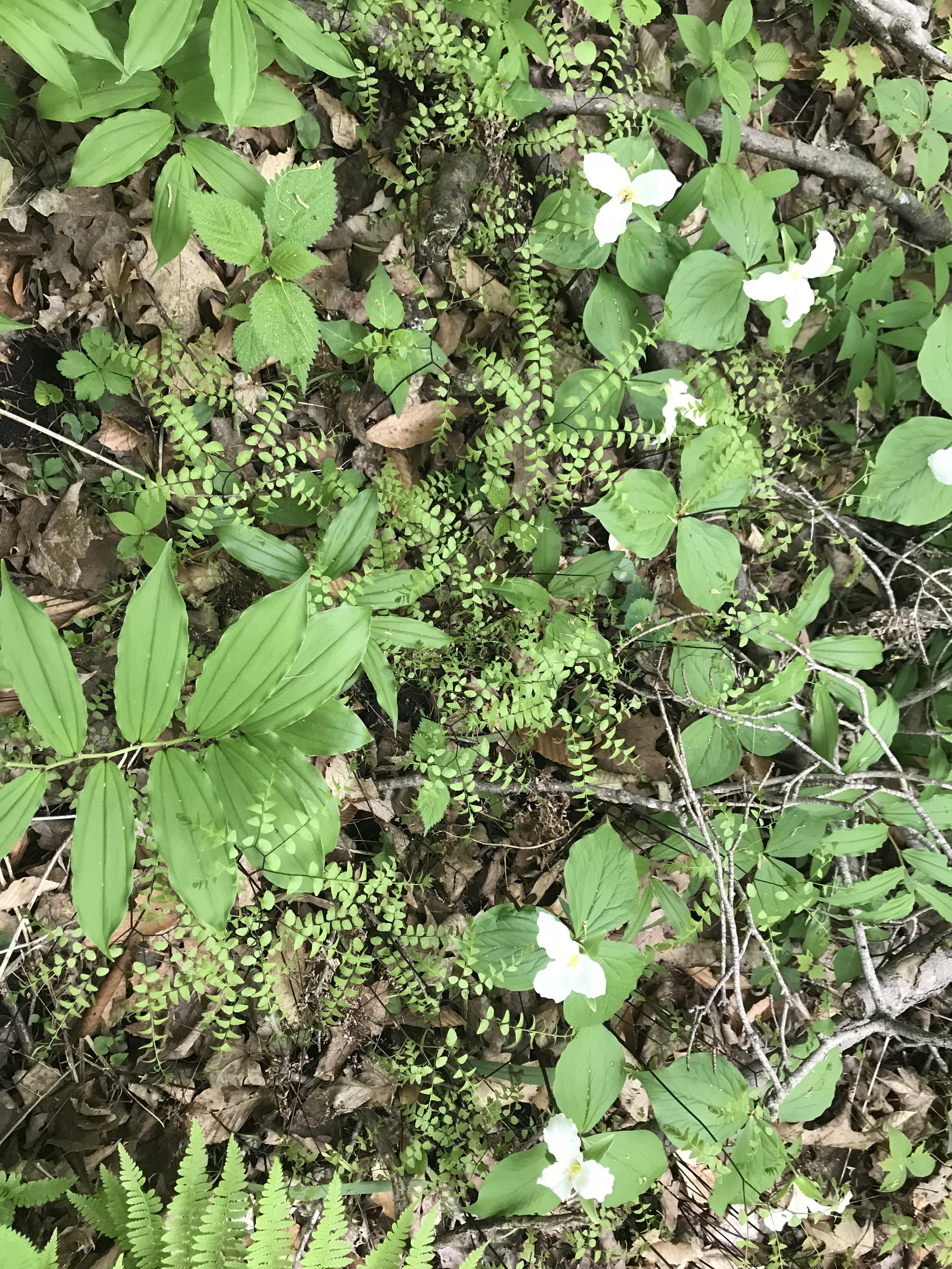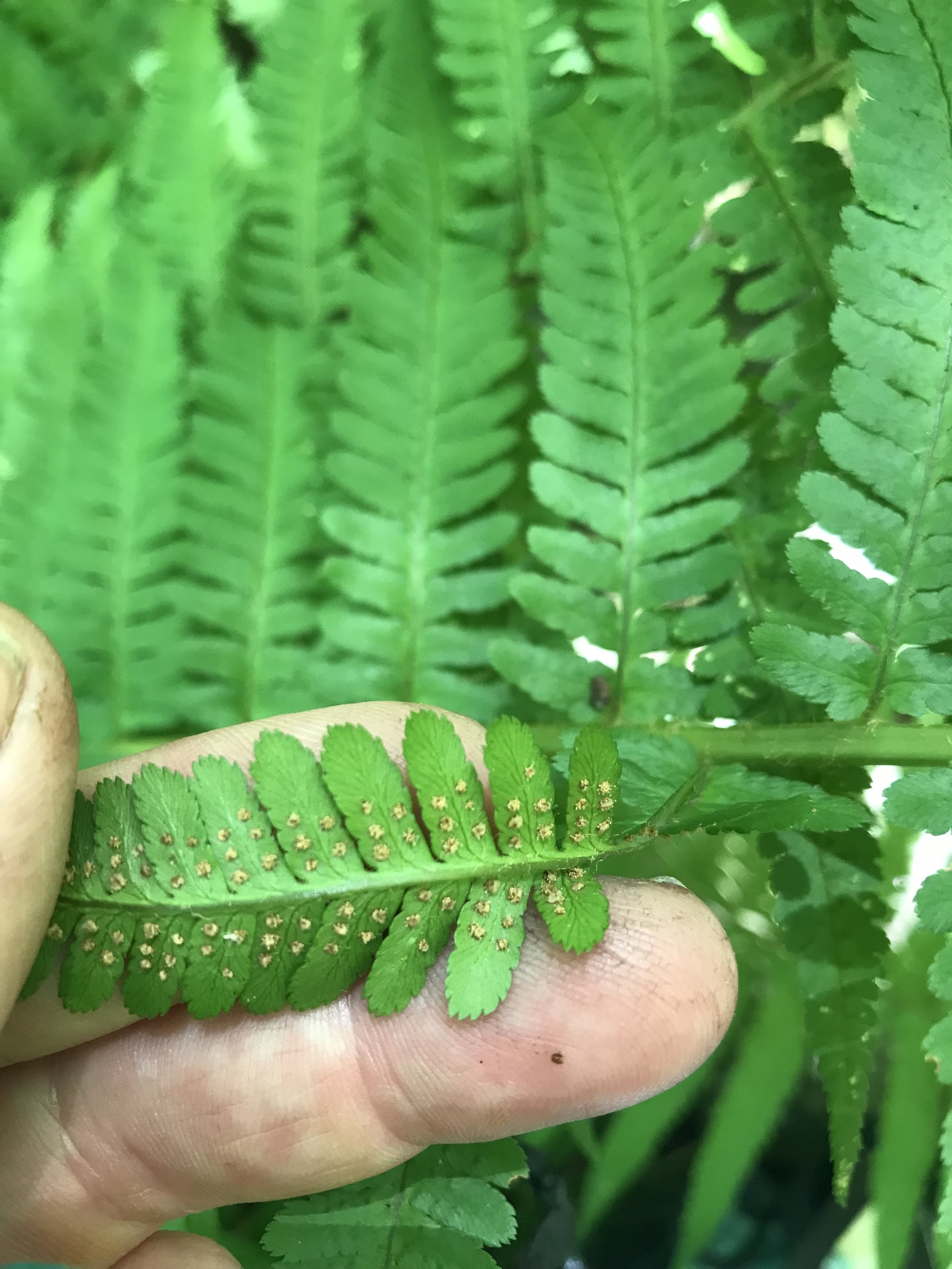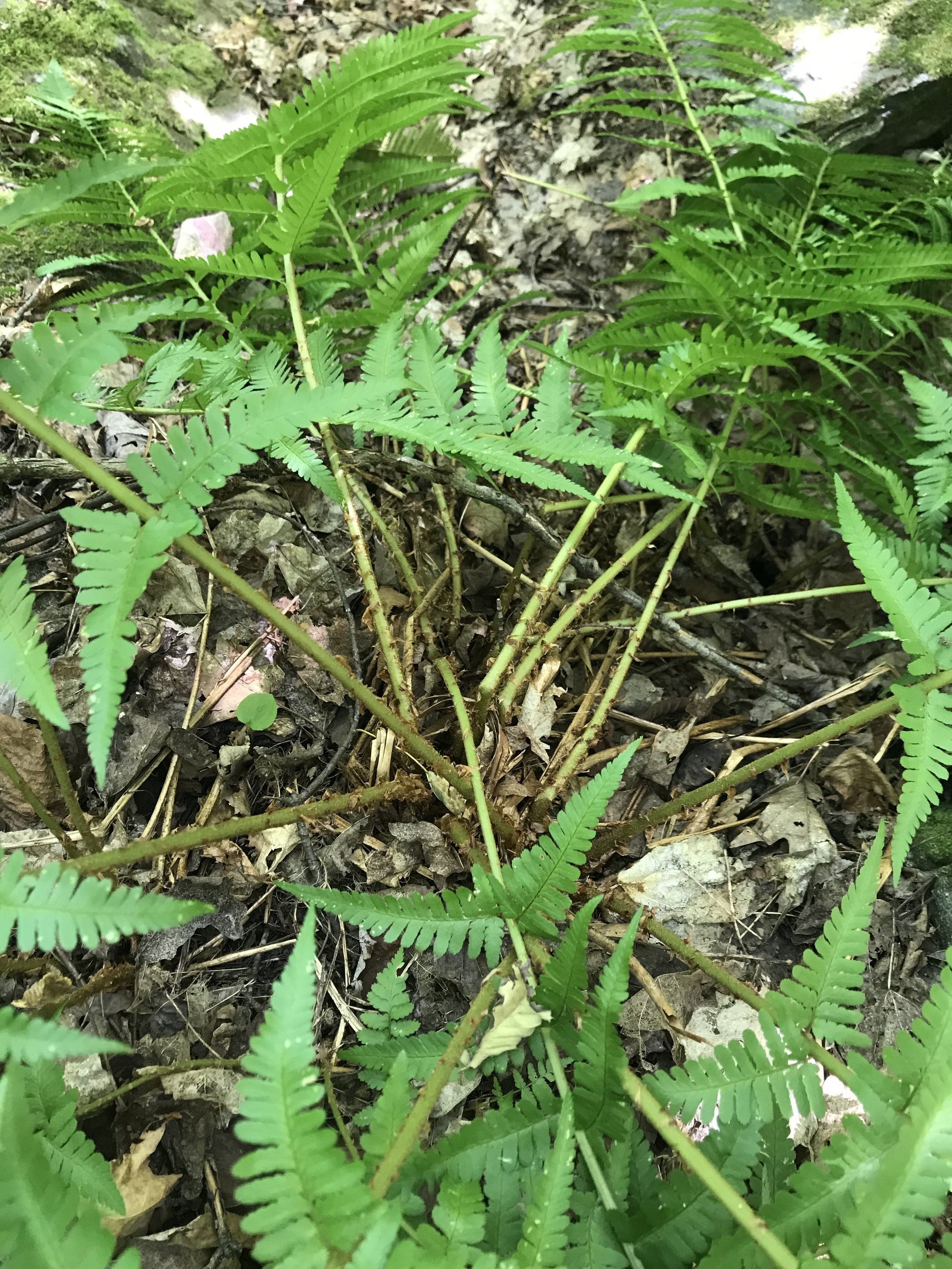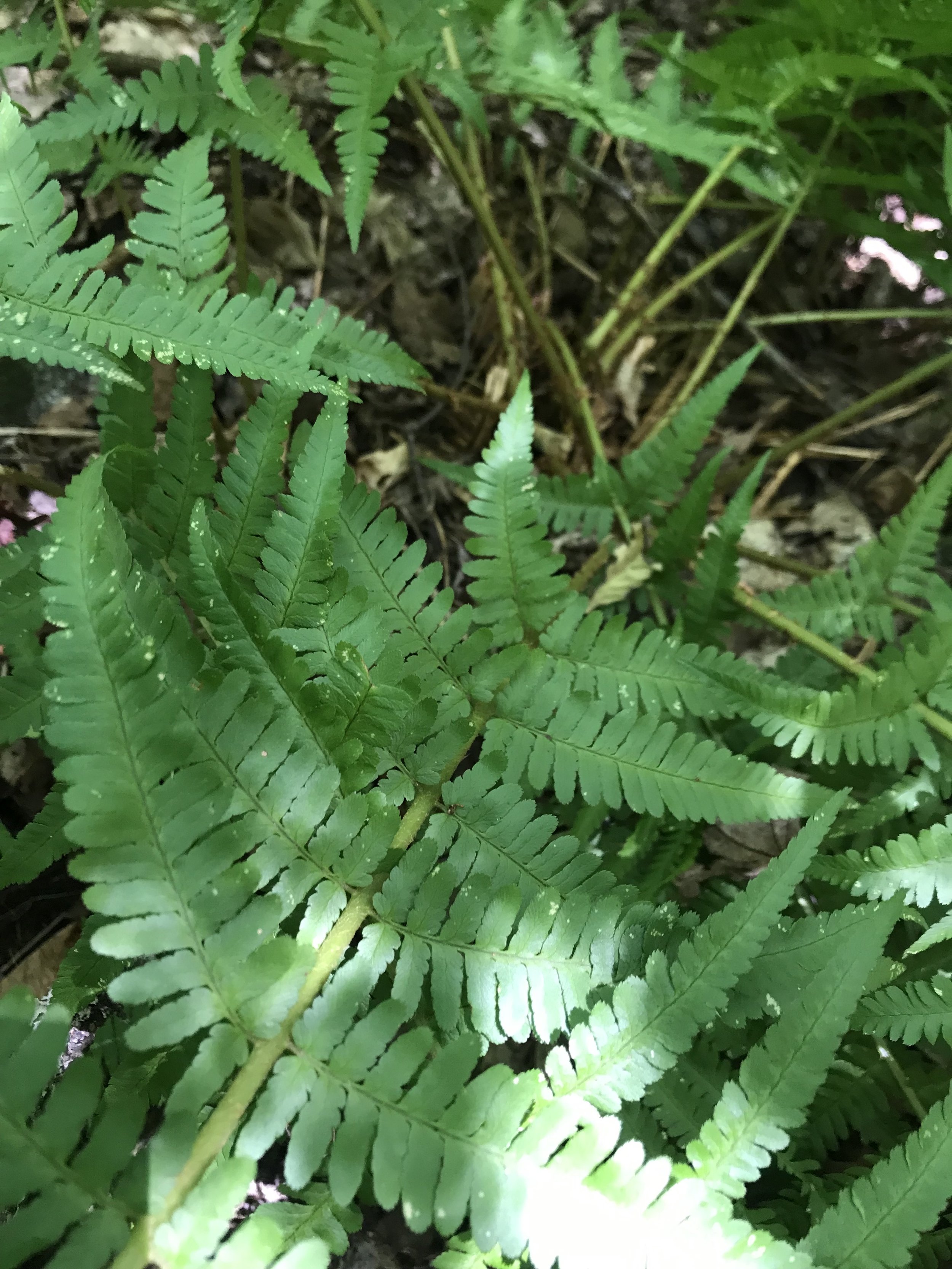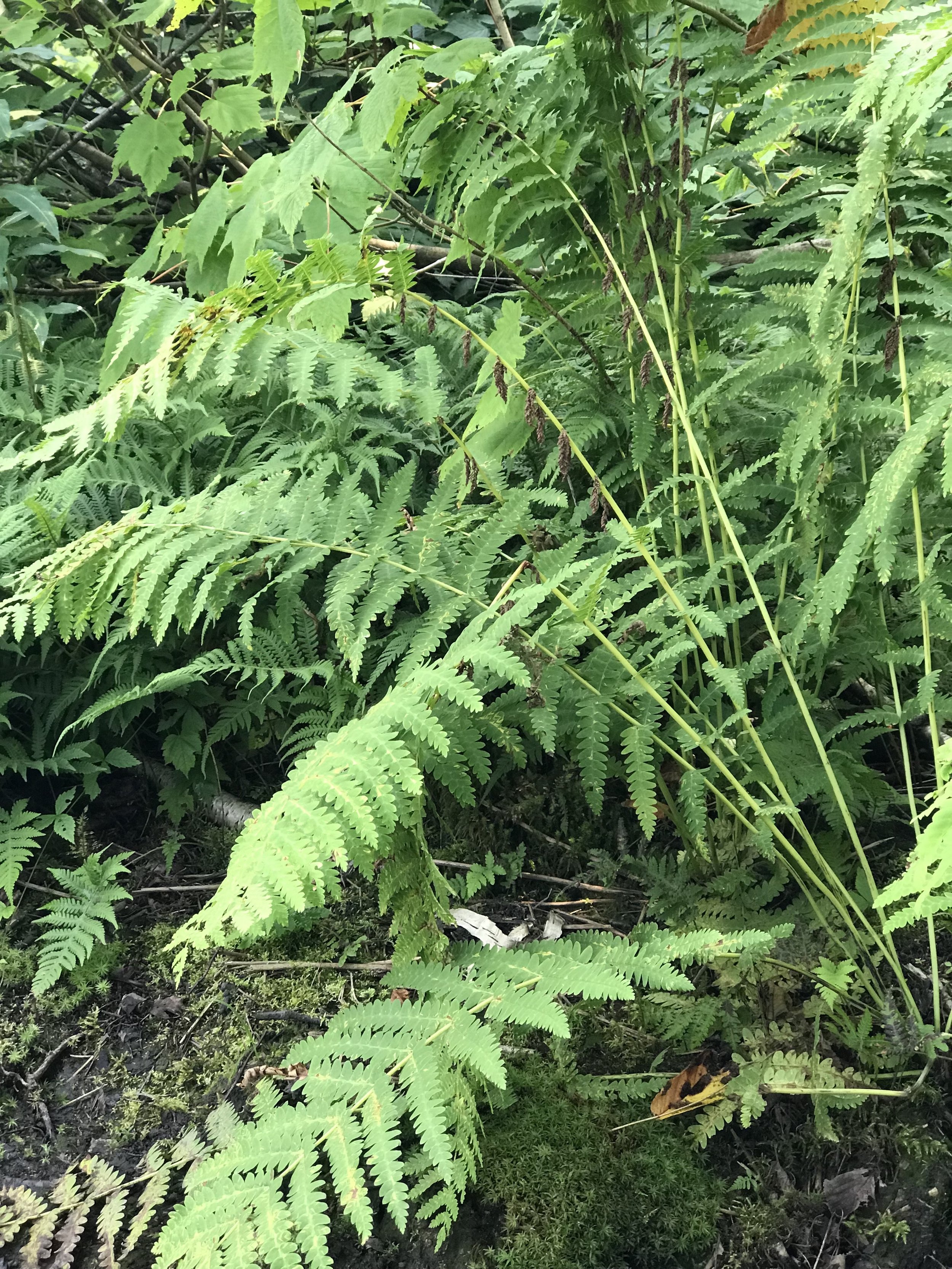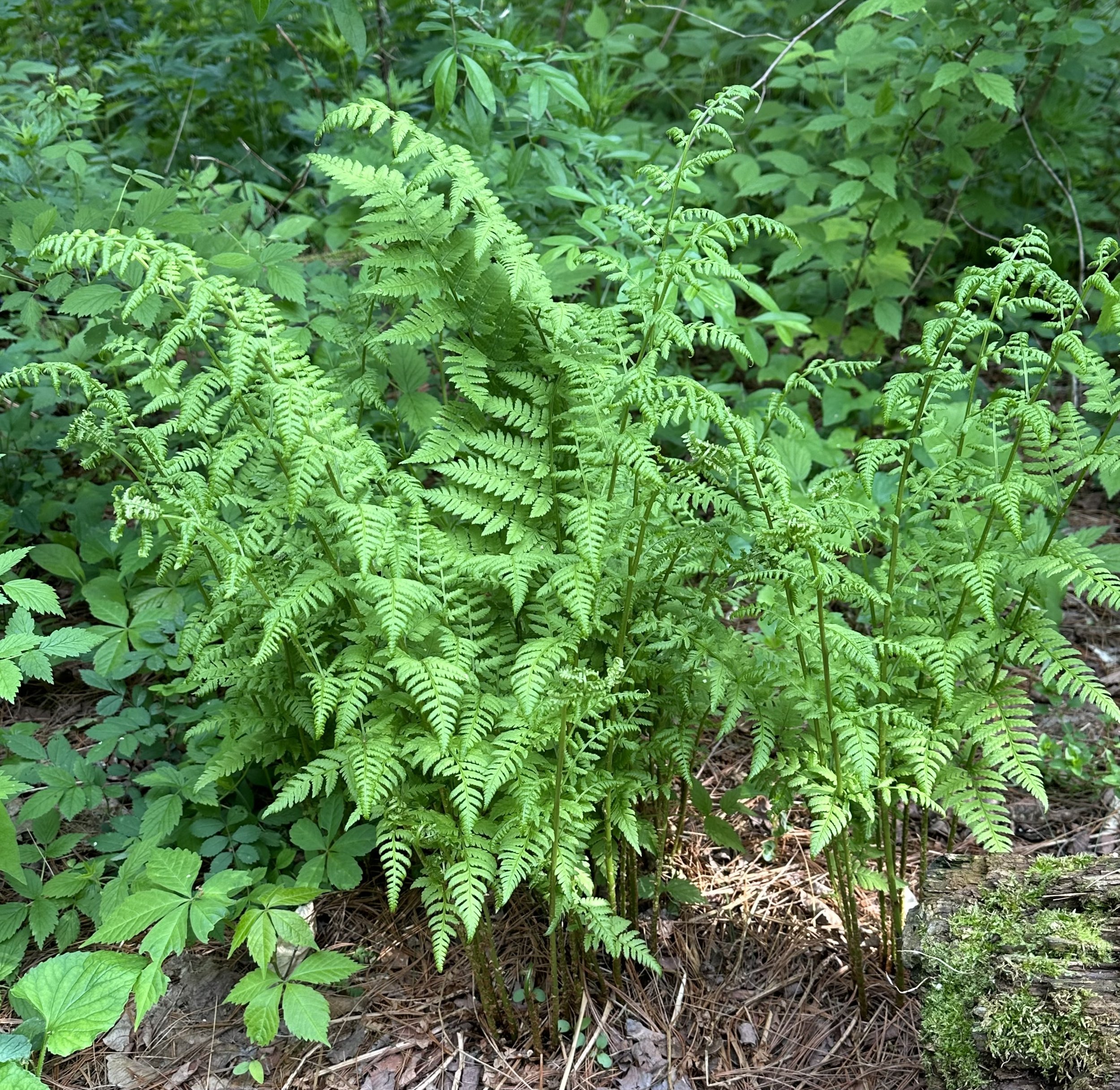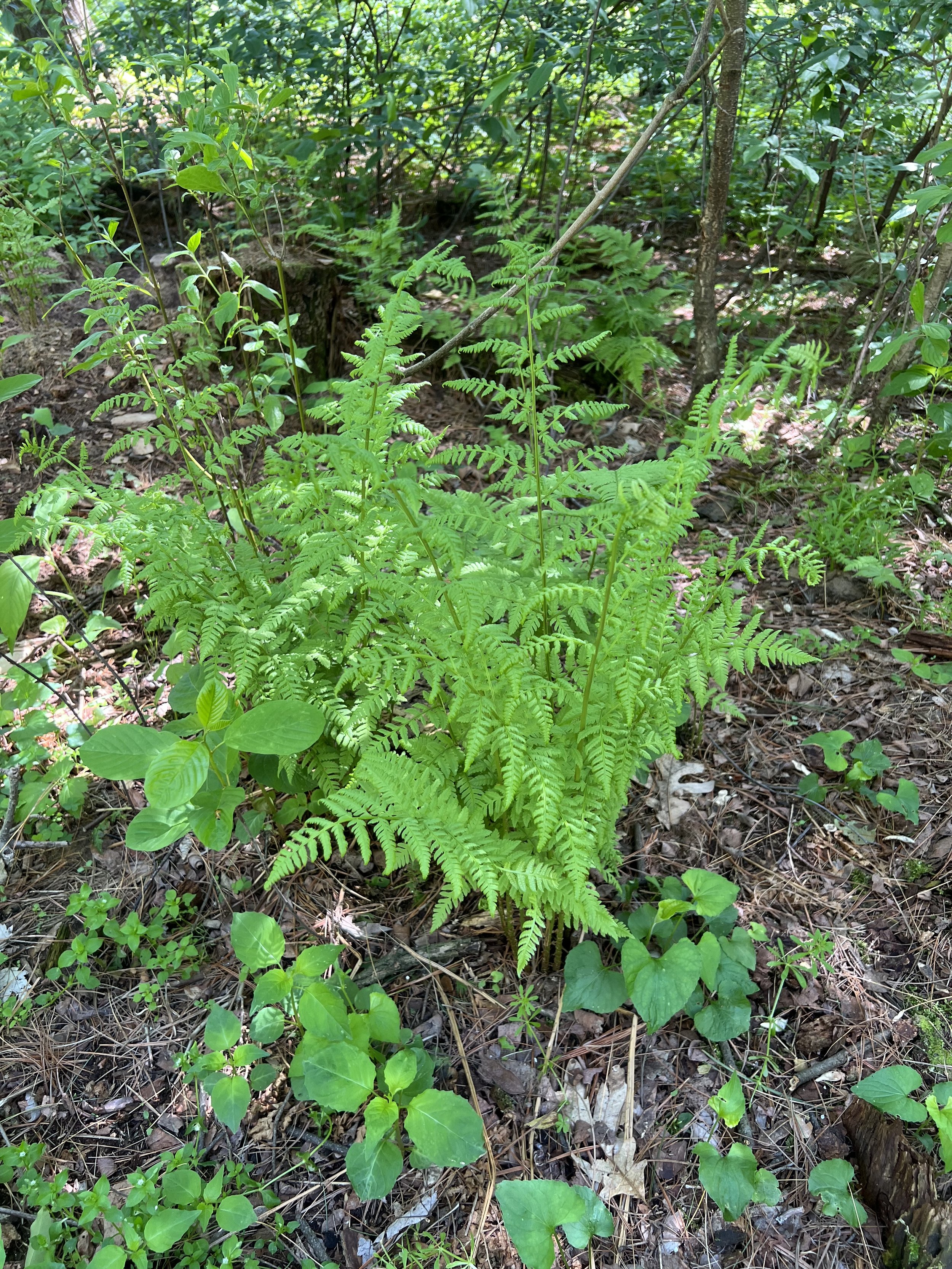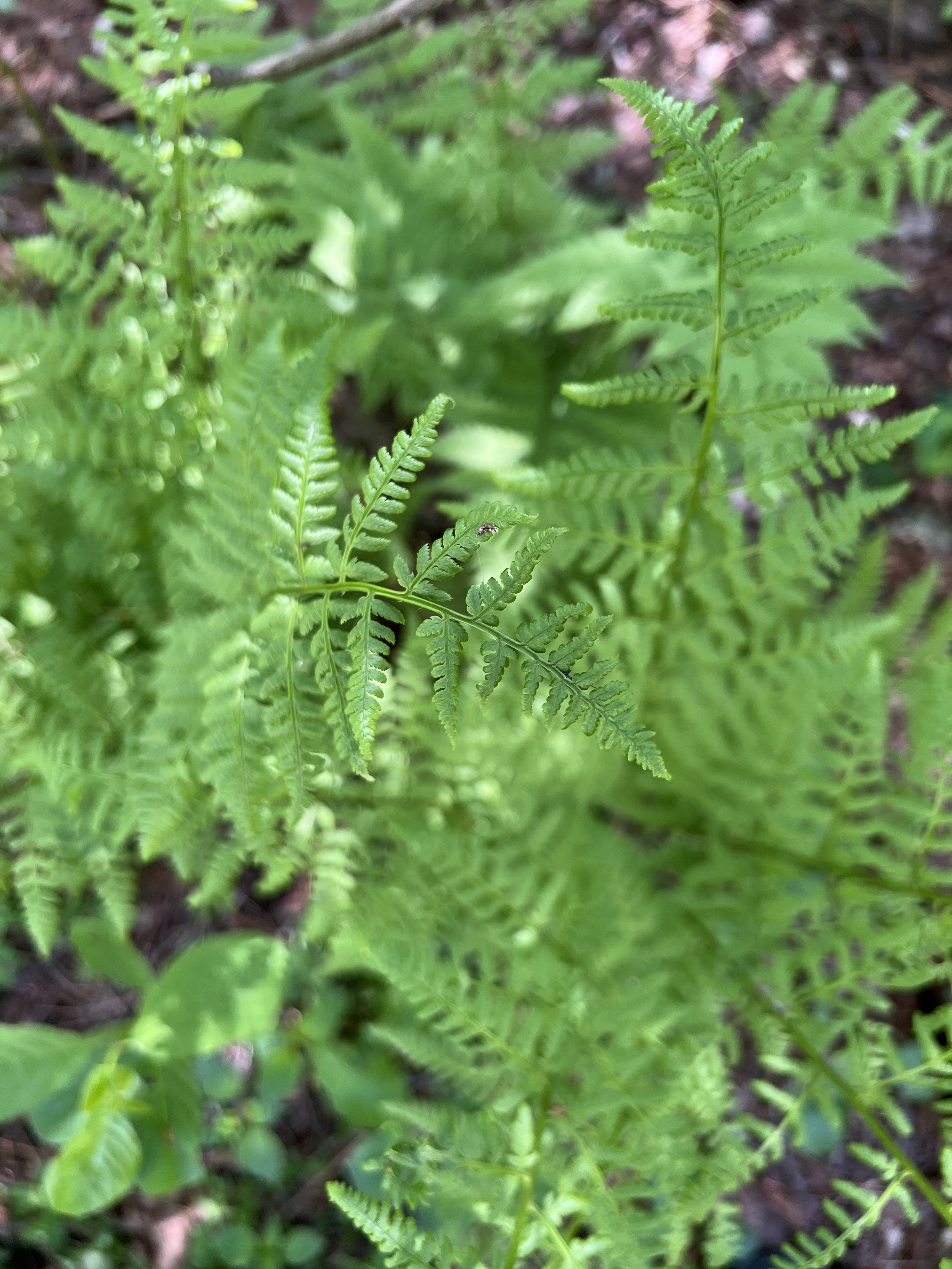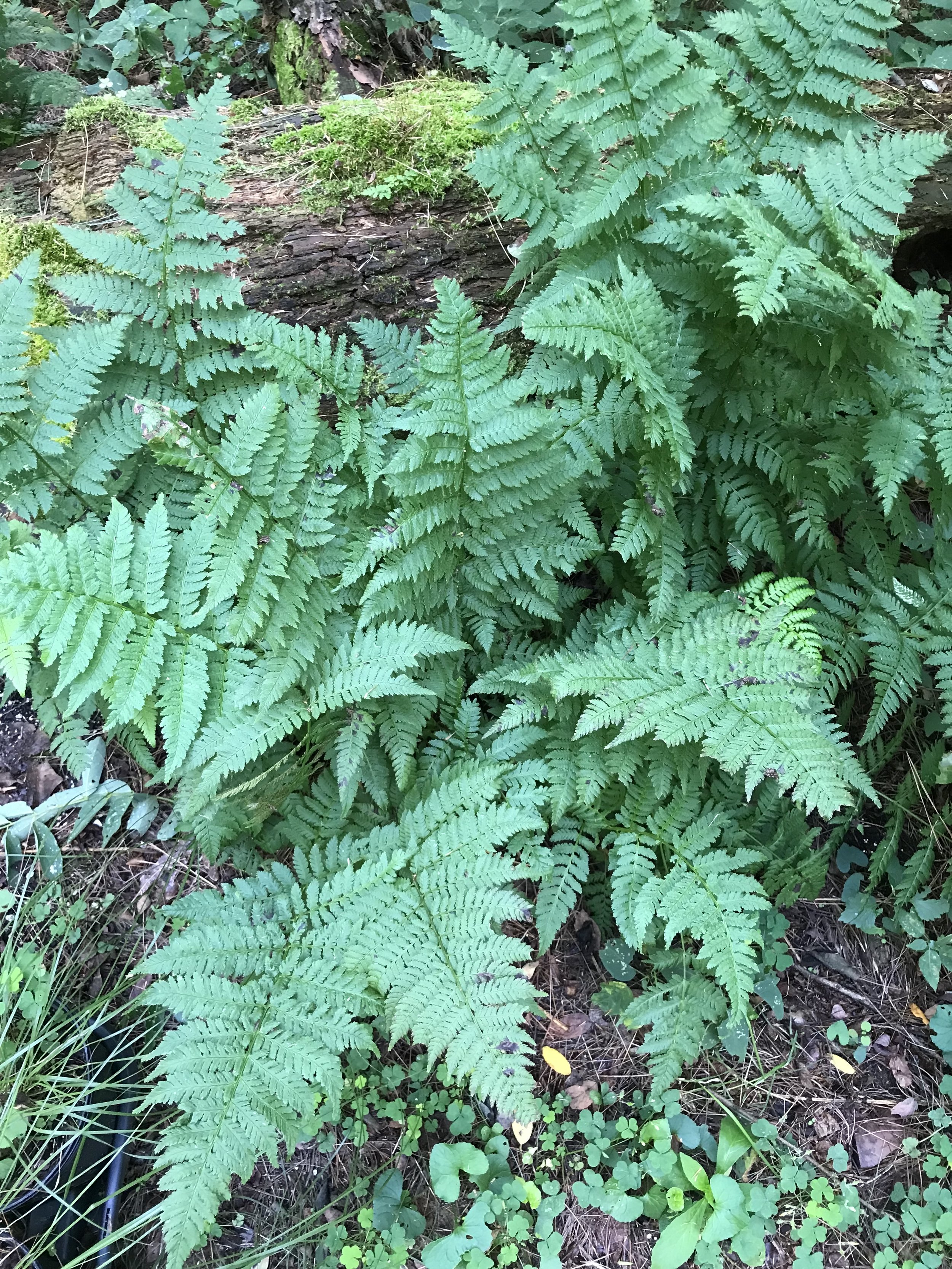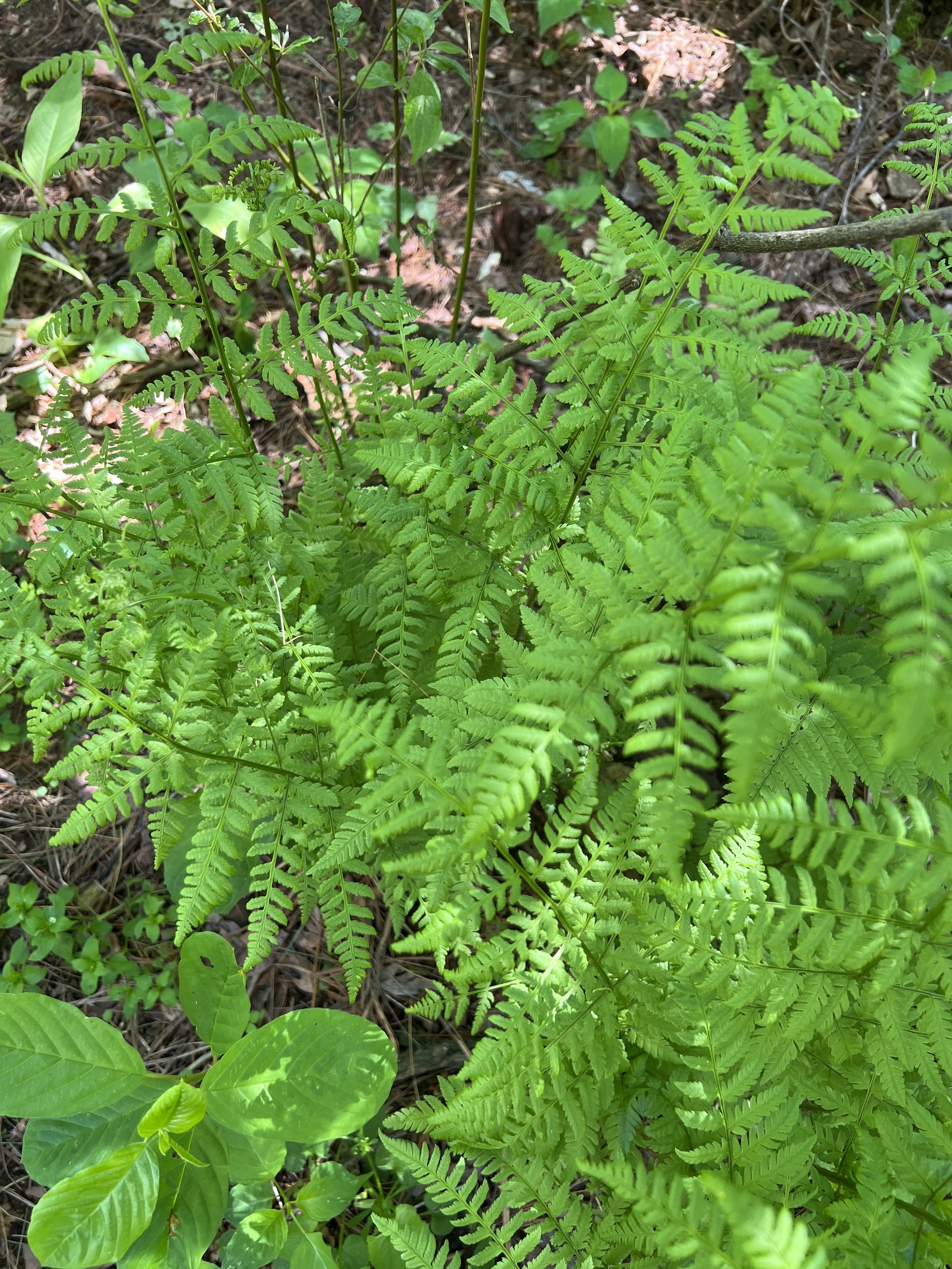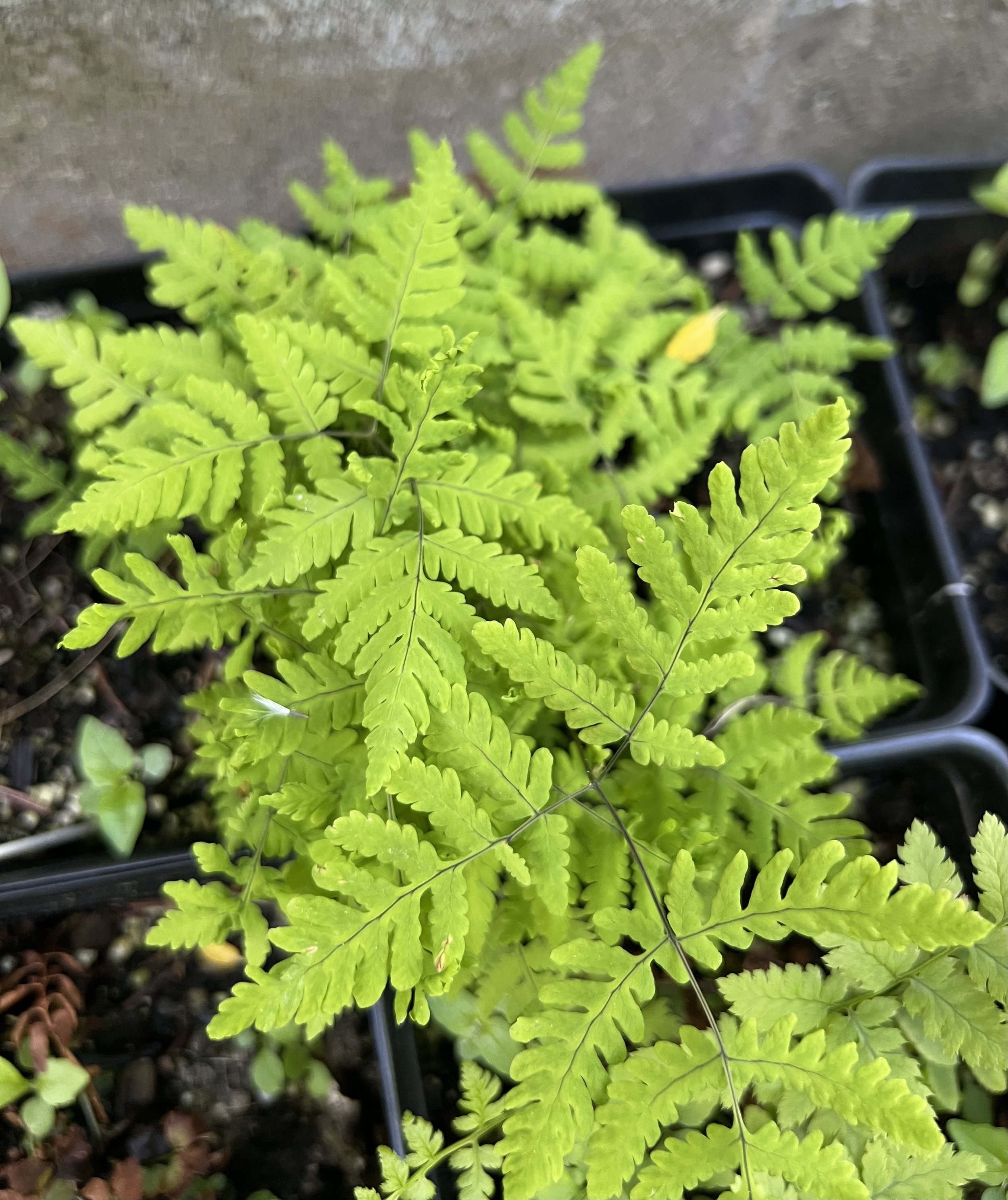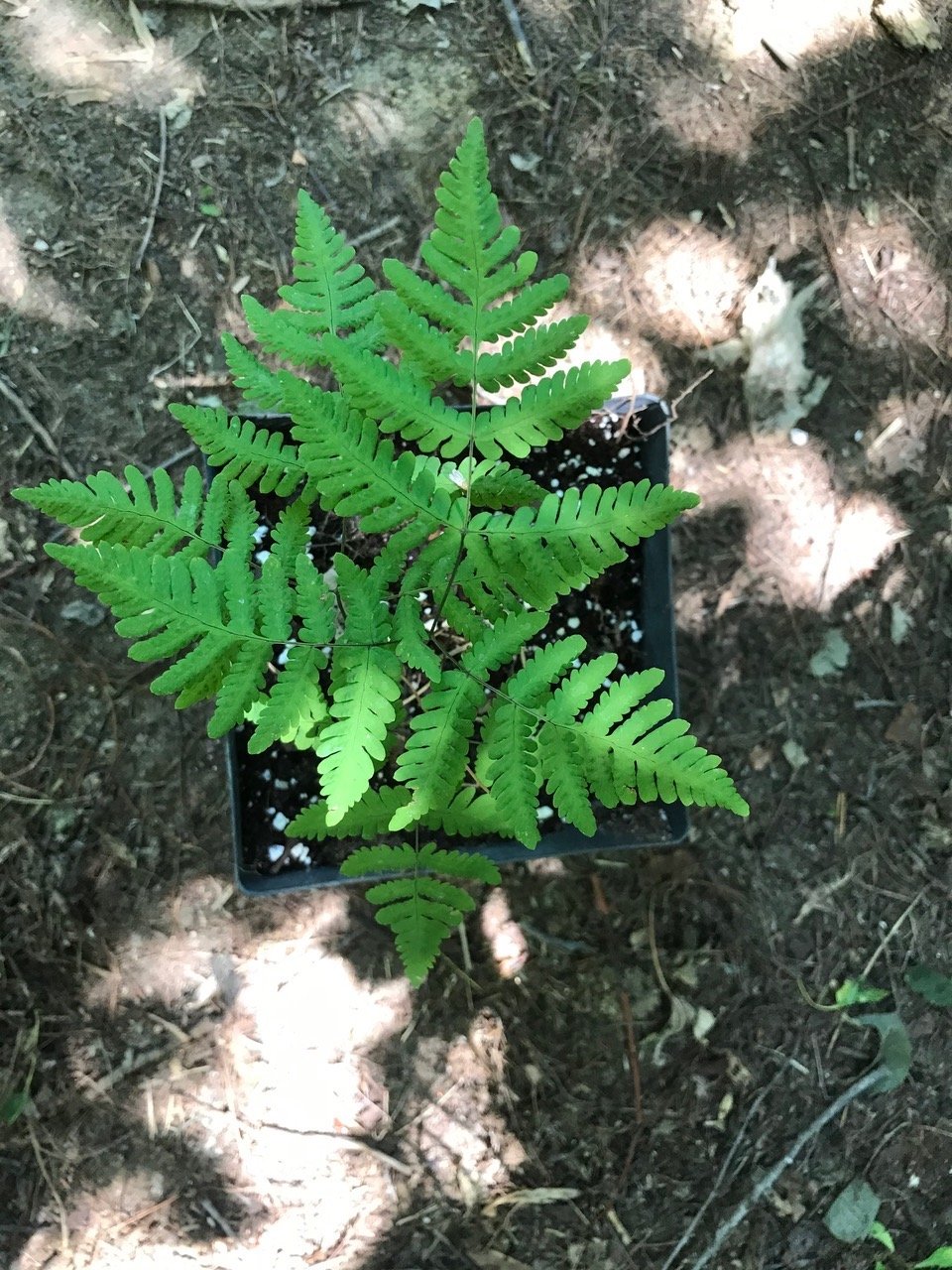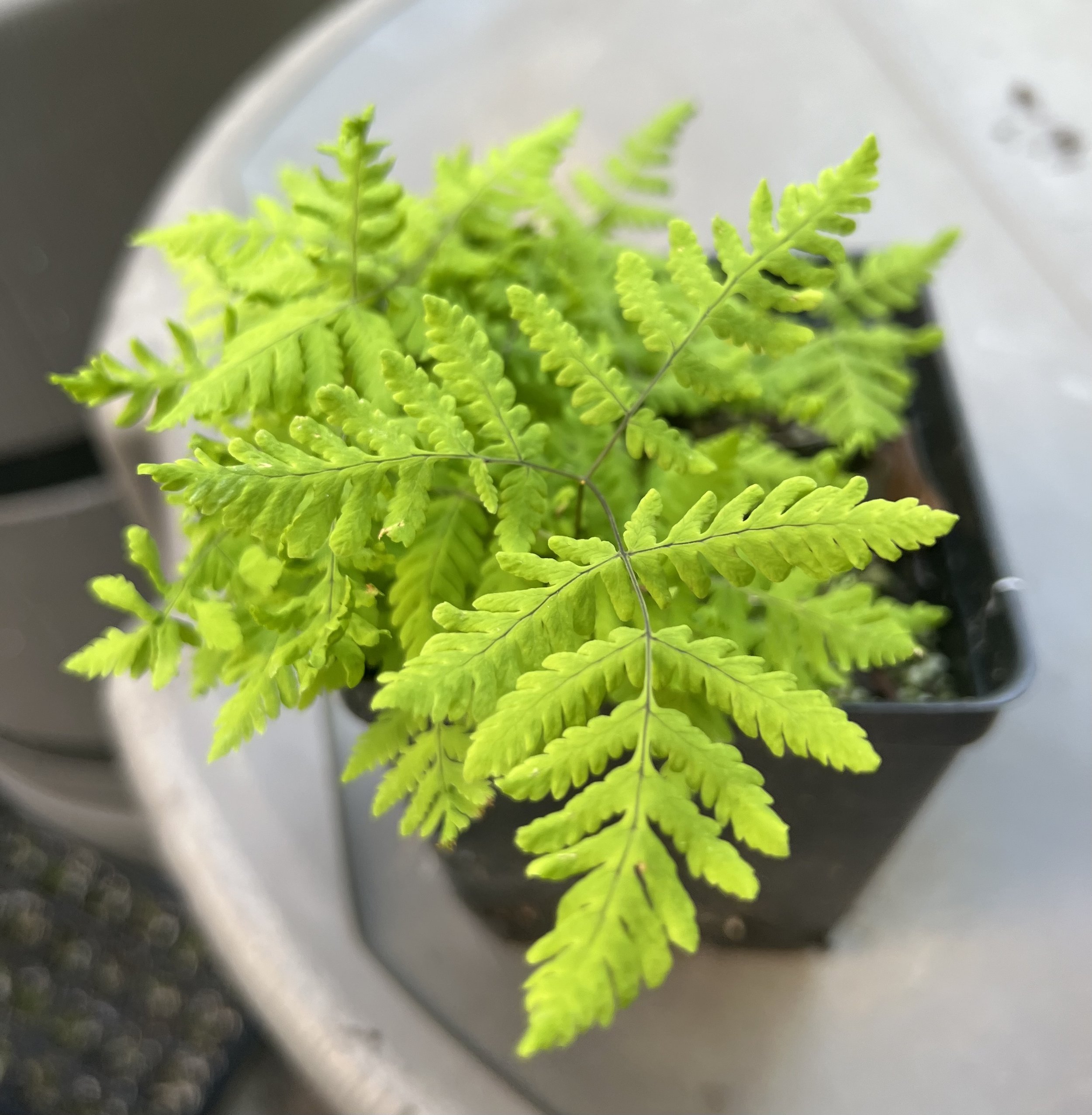 Image 1 of 10
Image 1 of 10

 Image 2 of 10
Image 2 of 10

 Image 3 of 10
Image 3 of 10

 Image 4 of 10
Image 4 of 10

 Image 5 of 10
Image 5 of 10

 Image 6 of 10
Image 6 of 10

 Image 7 of 10
Image 7 of 10

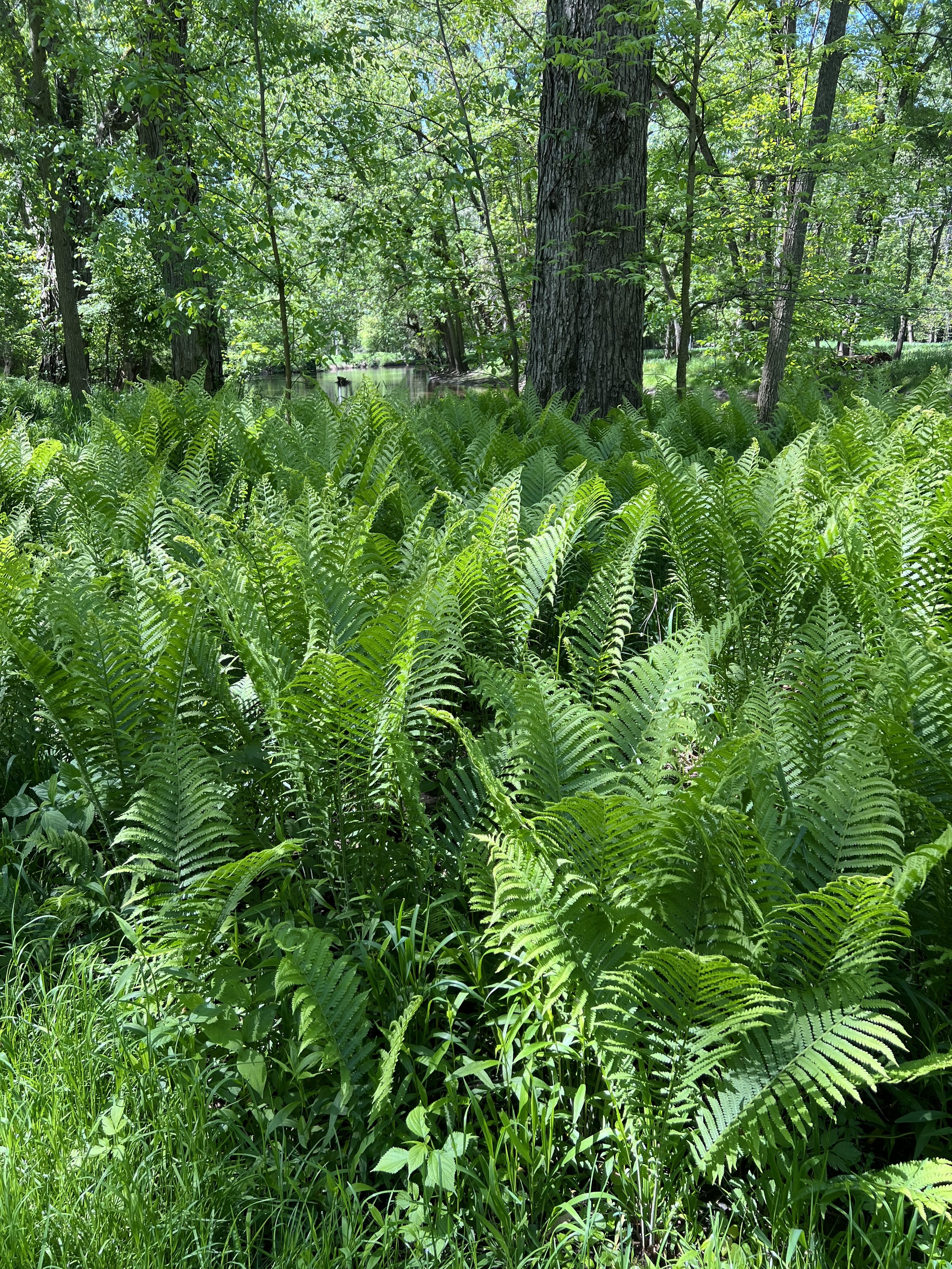 Image 8 of 10
Image 8 of 10

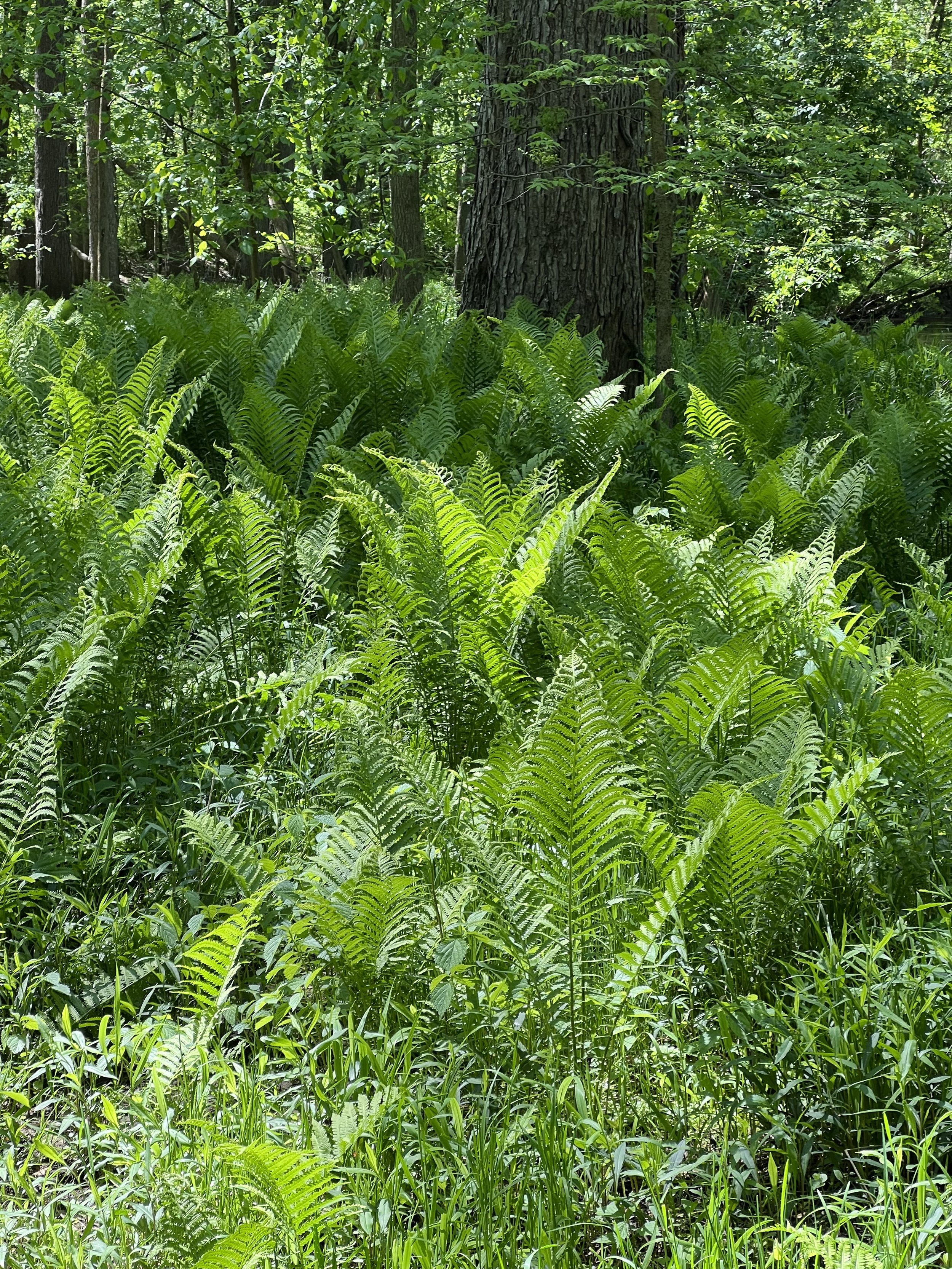 Image 9 of 10
Image 9 of 10

 Image 10 of 10
Image 10 of 10











Ostrich Fern (Matteuccia struthiopteris)
$8.50
Sold Out
Are you looking for a fern that takes up space or commands a presence? Ostrich Fern may be the one for you. It spreads by rhizome and grows to 5+ feet tall! In order to spread or even stay green, it will need constant moisture in the soil.
Ostrich Fern fronds are widest at the center and have smaller and smaller leaflets almost all the way to the ground. Like Sensitive Fern, the fertile fronds of Ostrich Fern stay around all winter, white the sterile fronds die back. If you are looking to distinguish the two ferns in the winter, Ostrich Fern has more pairs of spore bearing structures, with 25 or more. Sensitive Fern has 5-11 pairs.
This fern is a great plant for wildlife cover and does host a few insects. I always like to refer to Illinois Wildflowers to see what insects or animals might use the plant I’m researching!
Fiddleheads of the Ostrich Fern can be sautéed in butter and eaten, although by some reports, they are tough and stringy!
Ostrich Fern (Matteuccia struthiopteris)
Michigan Flora reference page for state distribution: Ostrich Fern
height: 3-5+ feet
soil: medium to wet
sun: dappled light, part sun
plant spacing: 3’
life cycle: perennial
family: Onocleaceae
spore source: Michigan
Sizes:
Get notified by email when this product is in stock.
Are you looking for a fern that takes up space or commands a presence? Ostrich Fern may be the one for you. It spreads by rhizome and grows to 5+ feet tall! In order to spread or even stay green, it will need constant moisture in the soil.
Ostrich Fern fronds are widest at the center and have smaller and smaller leaflets almost all the way to the ground. Like Sensitive Fern, the fertile fronds of Ostrich Fern stay around all winter, white the sterile fronds die back. If you are looking to distinguish the two ferns in the winter, Ostrich Fern has more pairs of spore bearing structures, with 25 or more. Sensitive Fern has 5-11 pairs.
This fern is a great plant for wildlife cover and does host a few insects. I always like to refer to Illinois Wildflowers to see what insects or animals might use the plant I’m researching!
Fiddleheads of the Ostrich Fern can be sautéed in butter and eaten, although by some reports, they are tough and stringy!
Ostrich Fern (Matteuccia struthiopteris)
Michigan Flora reference page for state distribution: Ostrich Fern
height: 3-5+ feet
soil: medium to wet
sun: dappled light, part sun
plant spacing: 3’
life cycle: perennial
family: Onocleaceae
spore source: Michigan







